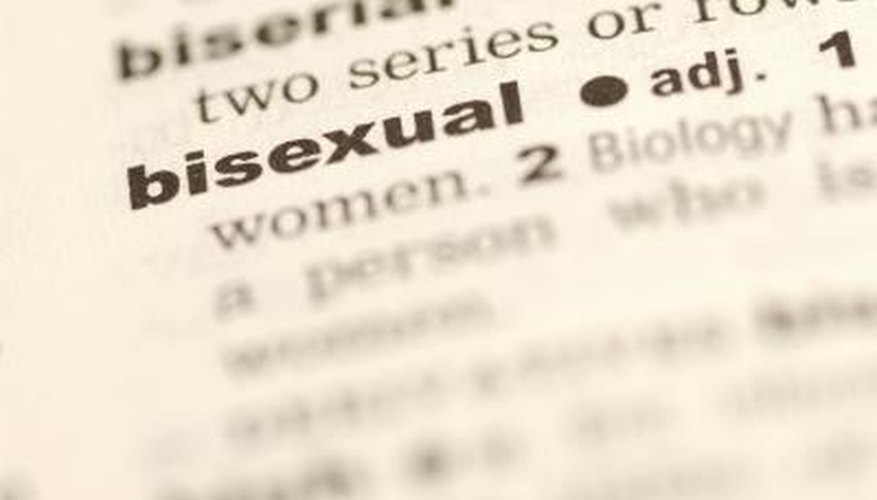The Kinsey Scale, developed in 1948 by Alfred Kinsey, Clyde Martin and Wardell Pomeroy, uses the numbers 1 through 6 to determine an individual's sexual preference. People who place at a 0 on the scale are considered heterosexual -- those with a score of 6 are considered gay or lesbian. Bisexual men and women are between a 1 and 5 on the scale. Aside from the formal test, there are several signs and behaviours that can indicate bisexuality in men.
Past Behavior
Counsellor and nurse Kathy Labriola asserts that some men are circumstantial bisexuals, meaning they live as straight men most of the time, but will display attraction to the same sex when an opposite-sex partner is not available. This is common for men during time spent in jail or in the military. Men who have exhibited recreational bisexuality in the past, or who have had sexual relations with another man under the influence of drugs or alcohol, are more likely to repeat the behaviour during another bout of intoxication. These findings further prove Kinsey's belief that that men are not permanently bound to how they scored on the Kinsey Scale: "An individual may be assigned a position on this scale, for each period in his life..."
- Counsellor and nurse Kathy Labriola asserts that some men are circumstantial bisexuals, meaning they live as straight men most of the time, but will display attraction to the same sex when an opposite-sex partner is not available.
Homophobic Behavior
When a man displays extremely homophobic behaviour, he may be doing so because he has repressed sexual feelings for men that he chooses not to acknowledge. According to Men Stuff.org, one level of homophobia is being afraid of being perceived as gay or lesbian. Men who don't want their wives, girlfriends or close friends and family members to know that they are either practicing or considering bisexual behaviour will sometimes behave with aggression and counterfeit hatred against other bisexual or gay men, so that no one will suspect their own bisexuality. A man's angry actions or words when he is around gay or bisexual men can also indicate that he is not comfortable with his own tendencies, and doesn't want to be "found out."
- When a man displays extremely homophobic behaviour, he may be doing so because he has repressed sexual feelings for men that he chooses not to acknowledge.
- A man's angry actions or words when he is around gay or bisexual men can also indicate that he is not comfortable with his own tendencies, and doesn't want to be "found out."
Disinterest in Sex
When a man appears increasingly disinterested in heterosexual intimacy, this could be a sign that he is bisexual. Men may seem somewhat satisfied with the sex life with a female partner, but their wives or girlfriends may notice that the man is also interested in spending time around attractive men. Constant requests for less-than-conventional sexual activities and an interest in gay or bisexual literature with a sexual connotation also may indicate that a man has engaged in bisexual activity before, or is curious.
Close Friendships
According to Signs of a Bisexual Husband.com, a man who has close friendships with several men who are openly gay, or who are also bisexual, could be prone to exhibit the same behaviour. Although this is not a definite indicator, it can signify that a man is comfortable with the bisexual lifestyle and wouldn't have a problem assimilating to it. Again, this doesn't definitely mean that a man is bisexual; however, when it becomes obvious that the majority of his close friends are not heterosexual, this could mean that perhaps he has bisexual feelings, but has never acted on them.
